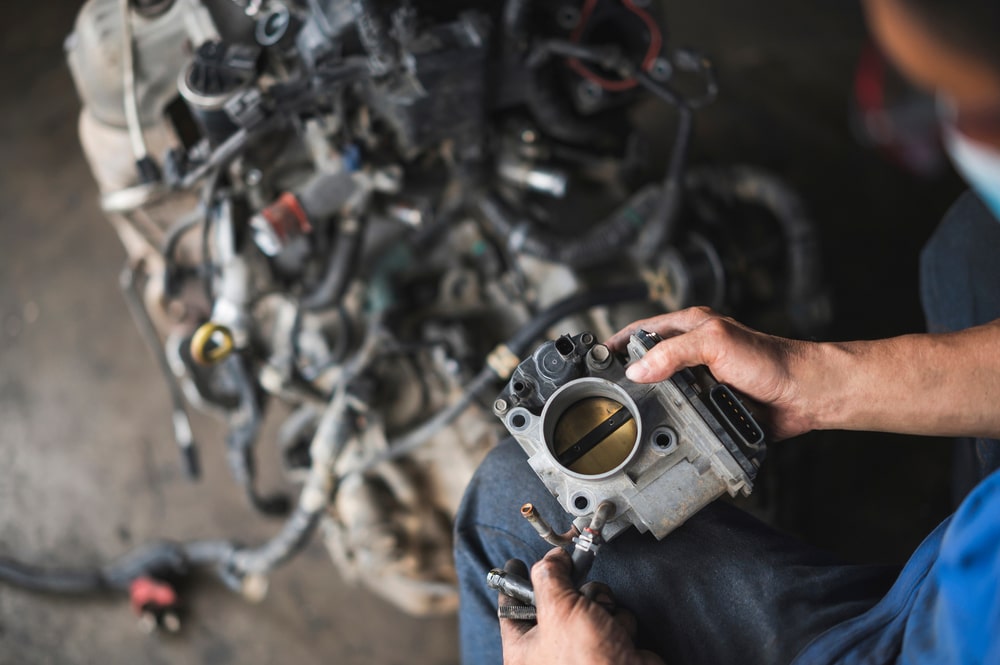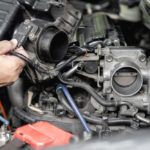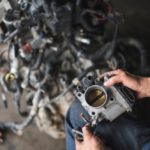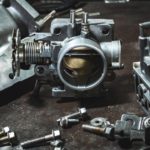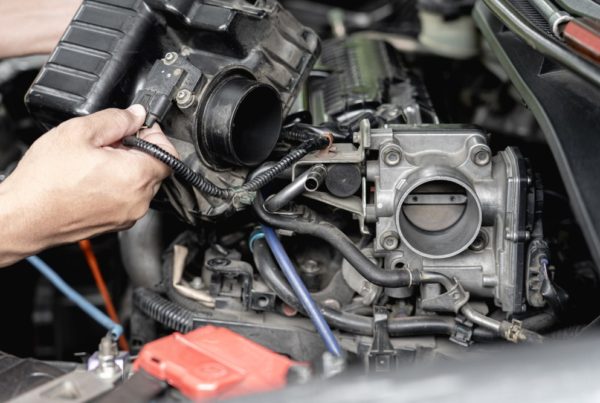Table of Contents
Throttle Body Overview
The throttle body is a vital component of your car’s air intake system. It controls how much air flows into your engine, which directly impacts fuel combustion and engine performance. Modern vehicles rely on electronic throttle control systems, meaning the throttle body communicates with your car’s ECU (Engine Control Unit) to regulate power, acceleration, and efficiency.
What Is a Throttle Body?
The throttle body is a valve that manages how much air enters your engine’s intake manifold. It contains a butterfly plate that opens and closes based on your gas pedal input. The wider it opens, the more air enters, and the more fuel is injected by the system—this mixture is essential for combustion.
In most modern vehicles, the throttle body is controlled electronically rather than with a mechanical cable, using a system known as Electronic Throttle Control (ETC) or Drive-by-Wire.
Where Is the Throttle Body Located?
You’ll typically find the throttle body:
- Between the air filter box and the intake manifold.
- In older carbureted vehicles, the throttle body was part of the carburetor.
- In modern fuel-injected cars, it’s an independent component linked to the gas pedal electronically or mechanically.
How Does a Throttle Body Work?
Here’s a step-by-step breakdown of how it functions:
- You press the accelerator pedal.
- The butterfly valve inside the throttle body opens.
- Airflow increases into the intake manifold.
- The throttle position sensor (TPS) and mass airflow sensor (MAF) send real-time data to the ECU.
- The ECU adjusts the fuel injection based on airflow, maintaining the correct air-fuel ratio.
- Your engine receives the ideal mix for combustion, powering your vehicle smoothly.
Types of Throttle Bodies
1. Single Throttle Body
Most cars have a single throttle body, sufficient for regular 4-cylinder or V6 engines.
2. Multi Throttle Bodies
High-performance or luxury cars with V6, V8, or V12 engines may have:
One throttle body per cylinder bank
Or even individual throttle bodies per cylinder for better responsiveness and air intake control.
3. Dual Throttle Body Design
Some systems, like early Ford trucks with EFI, use two smaller throttle plates instead of a single large one. The principle remains the same.
Signs of a Faulty or Dirty Throttle Body
A malfunctioning throttle body can seriously affect drivability. Common symptoms include:
- Rough or high idling
- Engine stalling
- Poor acceleration
- Check Engine Light (CEL)
- Jerky throttle response
- Reduced fuel efficiency
These issues often stem from carbon buildup, electrical failure, or faulty sensors attached to the throttle body.
How to Clean a Throttle Body
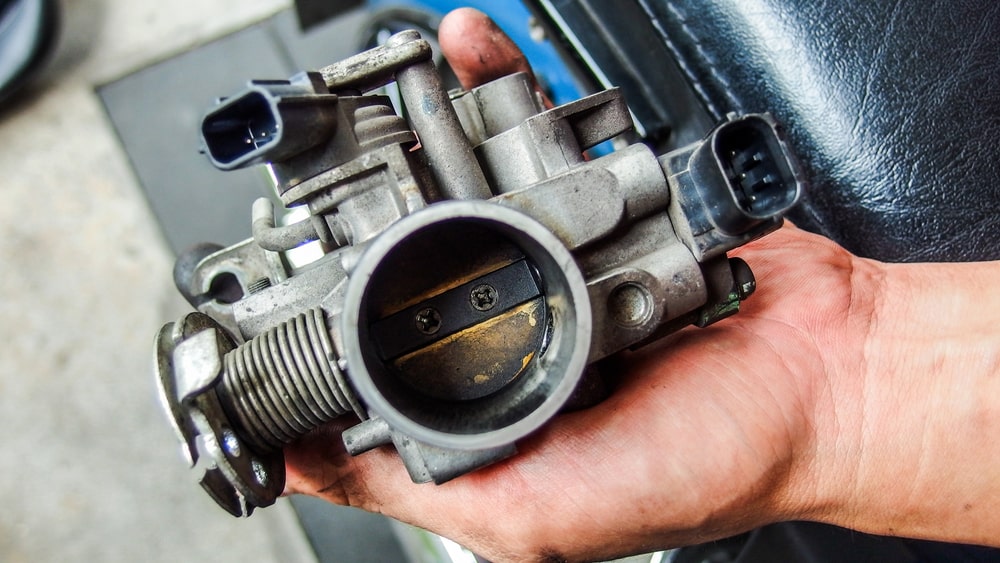
Cleaning your throttle body can resolve many drivability issues and restore performance.
Tools You Need
- Throttle body or carburetor cleaner
- A soft brush or clean cloth
- Screwdriver (if removal is needed)
- Safety gloves and goggles
Steps to Clean
- Turn off the engine and disconnect the battery.
- Locate the throttle body (between the air filter and intake manifold).
- Remove the air intake hose.
- Spray cleaner onto the butterfly valve and inside the housing.
- Gently wipe away carbon deposits.
- Allow it to dry and reassemble everything.
- Start your car to see if idle and throttle response have improved.
⚠️ Caution: If your throttle body includes a Throttle Position Sensor (TPS) or Mass Air Flow (MAF) sensor, avoid damaging or heavily spraying them. MAF sensors require a specific MAF cleaner.
Related Components to Inspect
1. Idle Air Control Valve (IAC)
Controls engine idle speed. If faulty, it may cause stalling or erratic idling.
2. Manifold Absolute Pressure Sensor (MAP)
Monitors engine vacuum and helps the ECU calculate proper fuel delivery.
3. PCV System & Oil Buildup
Oil vapors from the Positive Crankcase Ventilation (PCV) system can cause throttle body gunk and buildup.
When to Replace a Throttle Body
If cleaning doesn’t fix the issue and you still experience:
- Persistent idle surging
- Stalling
- Or faulty sensor readings
…it might be time for a throttle body replacement. Look for original or OEM-quality parts and ensure professional installation or calibration if necessary.
FAQs About Throttle Bodies
Q:What are the symptoms of a bad throttle body?
Common symptoms include rough idling, poor acceleration, stalling, check engine light, and high or erratic RPMs.
Q: Can I drive with a dirty throttle body?
Yes, but it can lead to rough idling, poor mileage, and long-term engine damage.
Q: How often should I clean it?
Every 30,000 to 50,000 miles is ideal, or whenever you notice drivability issues.
Q: Does throttle body cleaning improve performance?
Yes, cleaning improves airflow, restores throttle response, and may boost fuel economy.
Q:Is a throttle body the same as a carburetor?
No. Carburetors mix air and fuel mechanically, while throttle bodies control air intake in fuel-injected engines. Both affect the air-fuel ratio but work differently.
Final Thoughts
Your throttle body plays a crucial role in your engine’s health and performance. Keeping it clean and functional ensures smoother driving, better fuel efficiency, and fewer engine troubles.

